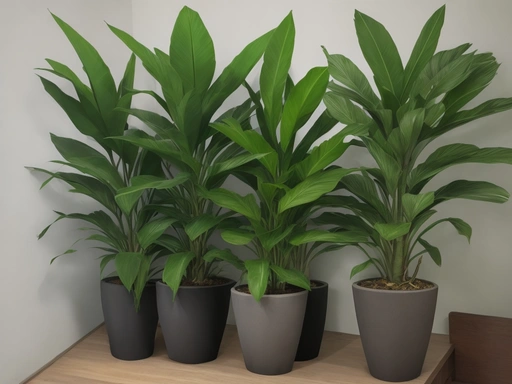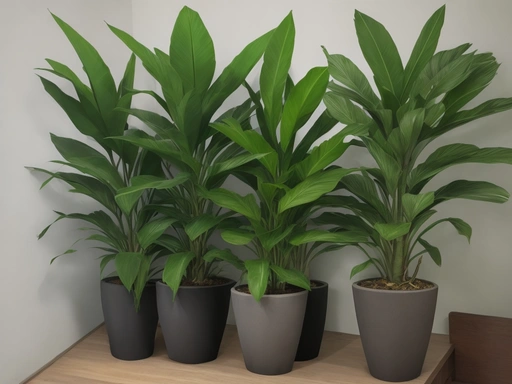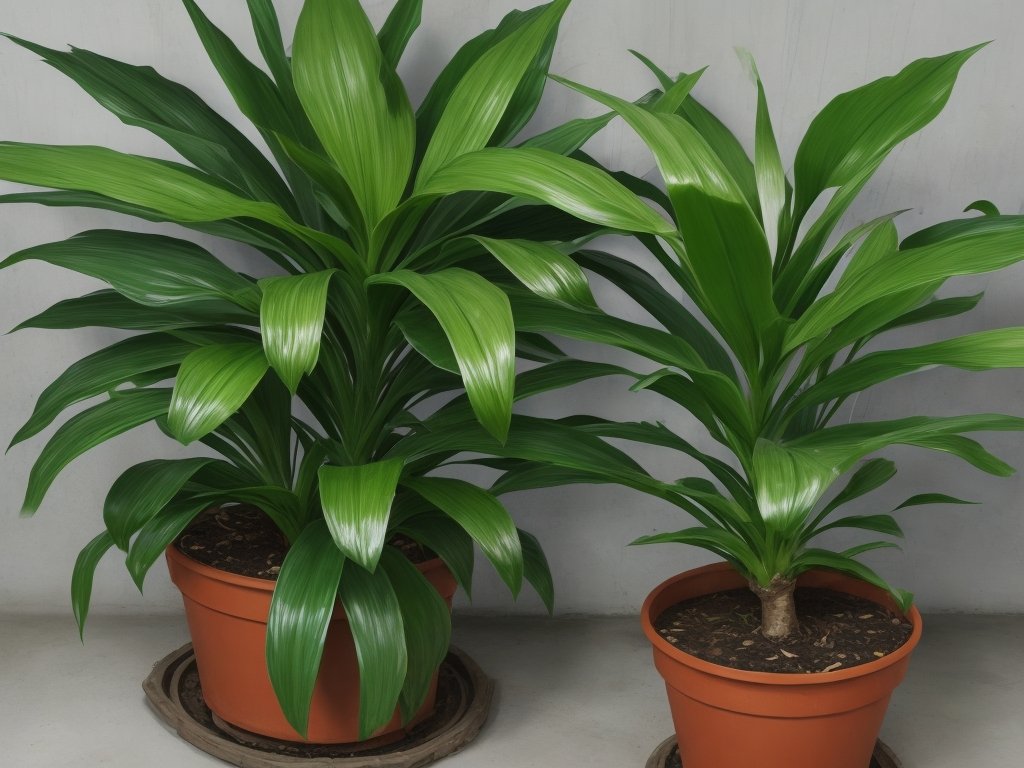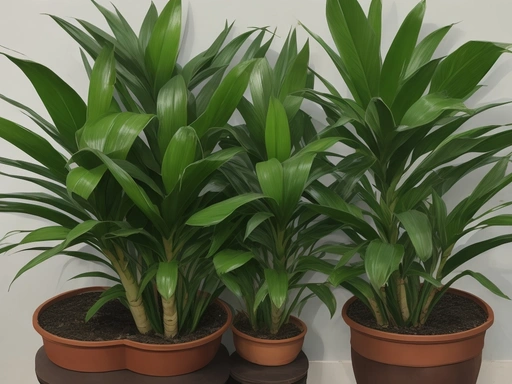Common Pests And Diseases Of Dracaena: Protect Your Plant!
Key Takeaways:
- Spider mites and mealybugs are common pests that infest Dracaena plants.
- Root rot and leaf spot are common diseases that affect Dracaena plants.
- Proper watering and regular cleaning can help prevent pest and disease infestations.
- Early detection and prompt treatment are crucial for managing pests and diseases in Dracaena plants.
Welcome to our blog where we’ll dive into the fascinating world of Dracaena plants and explore the common pests and diseases that can disrupt their growth and wellbeing. As a plant lover myself, I understand the frustration that comes with seeing your beloved Dracaena suffer.
But fear not! In this article, we’ll equip you with the knowledge to identify and tackle issues like aphids, mealybugs, spider mites, root rot, leaf spot, fusarium wilt, and anthracnose.
We’ll also share essential maintenance tips to keep your Dracaena healthy and thriving. So, let’s roll up our sleeves and give your plants the care they deserve!
| Pests | Diseases |
| Aphids | Leaf spots |
| Spider mites | Root rot |
| Mealybugs | Powdery mildew |
| Thrips | Crown rot |
| Scale insects | Blights |
| Whiteflies | Leaf drop |
Common Pests Affecting Dracaena Plants
Dracaena plants can be affected by common pests such as aphids, mealybugs, spider mites, and scale insects.
Aphids
Aphids are common pests that can affect Dracaena plants.
They are small, soft-bodied insects that feed on plant sap, causing stunted growth and distorted leaves.
Signs of aphid infestation include curled leaves, sticky residue (honeydew), and the presence of ants.
To prevent aphids, regularly inspect your plants, remove affected leaves, and use natural remedies like neem oil or insecticidal soap.

Identification and signs of aphid infestation on Dracaena
Aphids are small, soft-bodied insects that can infest Dracaena plants.
Look for these signs of aphid infestation: clusters of tiny, pear-shaped insects on leaves, stems, and flower buds, sticky honeydew residue on leaves and surrounding surfaces, curling or distorted leaves, yellowing or stunted growth.
Prevention tips and natural remedies for aphids
To prevent aphid infestations on your Dracaena plant, keep the plant healthy by providing proper care such as regular watering and fertilizing, as weak and stressed plants are more susceptible to pests.
Additionally, avoid over-fertilization and overcrowding of plants which can attract aphids.
Natural remedies include spraying the plant with a mixture of water and dish soap or neem oil, or introducing ladybugs or lacewings, which are natural predators of aphids.
Regularly inspect your plant for signs of aphids and take action immediately if you notice an infestation.
Mealybugs
Mealybugs are small, soft-bodied insects that can infest Dracaena plants.
They have a white, cotton-like appearance and feed on the sap, causing leaf yellowing and stunted growth.
To prevent mealybugs, regularly inspect your plants, isolate new additions, and use natural remedies like rubbing alcohol or insecticidal soap.
Identification and signs of mealybug infestation on Dracaena
Mealybugs are small, soft-bodied insects that are covered in a white, powdery substance. You can identify mealybug infestation on your Dracaena plant by looking for white, cottony clusters on the leaves, stems, and leaf junctions.
You might also see sticky honeydew residue or black sooty mold on the plant’s surface.
Inspect your plant regularly to catch these signs early.

Prevention tips and natural remedies for mealybugs
Prevention tips for mealybugs:
- Regularly inspect your Dracaena plants for signs of mealybug infestation.
- Quarantine new plants before introducing them to your collection to prevent spreading mealybugs.
- Maintain a clean and dust-free environment for your plants, as mealybugs are attracted to dusty conditions.
- Avoid overwatering your plants, as excess moisture can create a favorable environment for mealybugs.
- Natural remedies for mealybugs:
– Apply a solution of water and dish soap directly on the pests to suffocate and kill them. – Rubbing alcohol can be used to kill mealybugs on the leaves and stems of your plants.
– Introduce beneficial insects like ladybugs or lacewings to your garden, as they feed on mealybugs.
– Neem oil can be an effective natural pesticide for controlling mealybugs. Dilute it with water and spray on the affected areas.
Spider Mites
Spider mites are tiny pests that can wreak havoc on Dracaena plants. They suck the sap from leaves, causing yellowing, speckled appearance, and webbing.
To prevent and treat spider mite infestations, keep the plant well-hydrated, increase humidity, and regularly inspect for signs of pests.
Consider using natural remedies such as neem oil or insecticidal soap if necessary.

Identification and signs of spider mite infestation on Dracaena
Spider mites are tiny pests that can cause big problems for your Dracaena plants. Here are some signs to look out for: tiny webs, stippling or yellowing of leaves, leaf curling, and overall weakened plant appearance.
You may also notice their presence by tapping the foliage over a piece of white paper and seeing tiny specks moving around.
Keep an eye out for these signs to catch a spider mite infestation early on.

Prevention tips and natural remedies for spider mites
To prevent spider mites on your Dracaena plants, regularly inspect the leaves and stems for any signs of infestation. Remove any affected plant parts immediately and isolate the plant if necessary.
Maintaining a clean and dust-free environment can also deter spider mites.
Natural remedies like spraying the plant with a mixture of water and neem oil or using a solution of water and mild dish soap can help control spider mite populations.
Scale Insects
Scale insects are small, oval-shaped pests that suck sap from plants, including Dracaena.
They can be identified as tiny bumps or scales on the leaves, stems, or branches of the plant.
Signs of infestation include yellowing leaves, stunted growth, and a sticky residue called honeydew.
To prevent and treat scale insects, you can manually remove them with a cloth or cotton swab dipped in rubbing alcohol.
Regularly inspect your plant for signs of infestation and consider using insecticidal soap or horticultural oil if necessary.
Identification and signs of scale insect infestation on Dracaena
Scale insects on Dracaena can be identified by small, dome-shaped or oval-shaped bumps on the leaves, stems, or branches.
They may vary in color from white to brown or even black.
Signs of infestation include sticky residue (honeydew) on the leaves, black sooty mold, and yellowing or wilting leaves.
Prevention tips and natural remedies for scale insects
To prevent scale insects on your Dracaena plants, regularly inspect them for signs of infestation such as sticky residue or small brown bumps on the leaves and stems. Prune affected areas and dispose of them properly.
You can also prevent scale insects by wiping the leaves with a mixture of water and mild soap or rubbing alcohol.
Additionally, introducing natural predators like ladybugs or lacewings can help control the infestation.
Common Diseases Affecting Dracaena Plants
Dracaena plants can be affected by several common diseases that can harm their health and appearance.
Let’s take a look at the causes, symptoms, prevention tips, and treatment options for these diseases.
Root Rot
Root rot is a common disease that affects Dracaena plants.
It is caused by excessive moisture in the soil, which leads to the roots becoming waterlogged and rotting.
Signs of root rot include yellowing leaves, wilting, and a foul odor coming from the roots.
To prevent root rot, make sure to allow the soil to dry out between waterings and avoid overwatering.
If your plant has root rot, you can try treating it by repotting it in fresh, well-draining soil and cutting away any affected roots.
Causes and symptoms of root rot in Dracaena plants
Root rot in Dracaena plants is typically caused by overwatering and poor drainage, which leads to excess moisture in the roots. Symptoms of root rot include yellowing or browning leaves, wilting, and a foul odor.
If the root rot is severe, the roots may appear mushy and black.
Prompt action is needed to save the plant.
Prevention tips and treatment for root rot
Preventing root rot in Dracaena plants involves proper watering techniques, allowing the soil to dry out between waterings, and using well-draining soil. Treatment for root rot includes removing affected roots, repotting in fresh soil, and adjusting watering practices.
Causes and symptoms of leaf spot in Dracaena plants
Leaf spot in Dracaena plants is caused primarily by fungal or bacterial infections. Overwatering, poor air circulation, and high humidity levels contribute to its development.
Symptoms include dark brown or black spots on the leaves, which may grow in size and form irregular shapes.
Infected leaves may also develop yellow halos and eventually drop off. Regularly inspect and promptly remove affected leaves to prevent further spread of the disease.
Prevention tips and treatment for leaf spot
To prevent leaf spot in Dracaena plants, ensure proper watering by avoiding overwatering and allowing the soil to dry between waterings. Maintain good airflow around the plant to prevent moisture buildup.
Remove infected leaves promptly.
Treat leaf spot with a fungicide specifically labeled for use on Dracaena plants.
Fusarium Wilt
Fusarium Wilt is a common disease that affects Dracaena plants.
It is caused by a soil-borne fungus called Fusarium oxysporum.
The fungus invades the plant’s vascular system, blocking the flow of water and nutrients.
As a result, the plant wilts, leaves turn yellow and eventually die.
To prevent Fusarium Wilt, ensure well-draining soil and avoid overwatering.
If your plant is affected, remove and destroy the infected parts.
Causes and symptoms of fusarium wilt in Dracaena plants
Fusarium wilt in Dracaena plants is caused by a soil-borne fungus called Fusarium. The fungus enters the plant through its roots and blocks the water-conducting vessels, leading to wilting and decline.
Symptoms include yellowing or browning of leaves, wilting, stunted growth, and eventually plant death.
Prevention tips and treatment for fusarium wilt
To prevent fusarium wilt in your Dracaena plants:
- Ensure proper drainage and avoid overwatering.
- Use sterilized potting soil and clean gardening tools to avoid spreading the disease.
- Remove and destroy infected plants to prevent the spread of the fungus.
To treat fusarium wilt:
- Unfortunately, there is no known cure for fusarium wilt. Infected plants should be removed and destroyed to prevent further spread.
- Fungicides are generally not effective against fusarium wilt, so prevention is key.
Remember to regularly inspect your plants, practice good sanitation, and promptly address any signs of disease to keep your Dracaena plants healthy.
Anthracnose
Anthracnose is a common fungal disease that can affect Dracaena plants.
It typically manifests as dark, sunken lesions on the leaves, stems, and branches.
The disease spreads through spores and thrives in warm and humid conditions.
To prevent anthracnose, ensure good air circulation, avoid overwatering, and promptly remove infected plant material.
If your Dracaena has anthracnose, prune affected areas and apply a fungicide according to the instructions.
Causes and symptoms of anthracnose in Dracaena plants
Anthracnose in Dracaena plants is caused by a fungal infection.
Symptoms include dark brown spots or lesions on the leaves, stems, and flowers.
The spots may have a yellow halo around them.
Infected leaves may also wilt, yellow, and eventually fall off.
Proper watering techniques and good air circulation can help prevent anthracnose.
Prevention tips and treatment for anthracnose
To prevent anthracnose in Dracaena plants, ensure proper watering by avoiding overwatering and allowing the soil to dry out between waterings. Maintain good air circulation by spacing out your plants and trimming overcrowded foliage.
Avoid overhead watering and wetting the leaves.
Treat anthracnose by pruning infected leaves and applying a fungicide according to the package instructions.
Maintenance and Care Practices to Prevent Pests and Diseases
To prevent pests and diseases in your Dracaena plants, focus on proper watering techniques, ideal lighting conditions, suitable temperature and humidity levels, regular cleaning and inspection, and using organic fertilizers while avoiding over-fertilization.
Proper watering techniques for Dracaena plants
To properly water your Dracaena plants, follow these guidelines:
- Check the top inch of soil: Stick your finger into the soil to check if it’s dry. If it feels moist, wait a bit longer before watering.
- Water thoroughly but infrequently: When you do water, make sure to thoroughly soak the soil until water drains out from the bottom of the pot. Avoid frequent light watering, as it can lead to root rot.
- Allow drainage: Ensure that your Dracaena’s pot has drainage holes so that excess water can escape. This prevents water from pooling around the roots and causing issues.
- Consider the environment: Factors like humidity, temperature, and the amount of light your Dracaena receives can affect its watering needs. Adjust your watering schedule accordingly.
- Avoid overwatering: Dracaena plants are susceptible to root rot, so it’s important not to overwater them. Let the top few inches of soil dry out before watering again.
Ideal lighting conditions for Dracaena plants
Dracaena plants thrive in bright, indirect light. They can tolerate some periods of direct sun, but too much can scorch their leaves.
Place them near a window with filtered sunlight or use sheer curtains to diffuse the light.
Avoid placing them in low-light areas, as this can cause leggy growth and loss of leaf color.
Suitable temperature and humidity levels for Dracaena plants
Dracaena plants prefer a temperature range of 60-75°F (15-24°C).
They can tolerate slightly cooler temperatures but are sensitive to cold drafts.
As for humidity, they can adapt to a wide range but generally prefer moderate levels.
It’s essential to provide adequate moisture without overwatering.
Regularly misting the leaves can help increase humidity.
Regular cleaning and inspection of Dracaena plants
Regular cleaning and inspection of Dracaena plants is essential for their health. Remove dust from the leaves using a soft cloth or sponge and gently wipe them.
Inspect the plants for any signs of pests or diseases such as aphids, mealybugs, spider mites, scale insects, root rot, leaf spot, fusarium wilt, or anthracnose.
Take necessary steps to address any issues promptly to keep your Dracaena plants thriving.
Using organic fertilizers and avoiding over-fertilization
Using organic fertilizers and avoiding over-fertilization is important for the health of your Dracaena plants.
Organic fertilizers provide a slow release of nutrients and improve soil quality.
Avoiding over-fertilization prevents nutrient build-up and potential damage to the plants.
Use compost, composted manure, or organic liquid fertilizers, and follow the recommended application rates.
Frequently Asked Questions
How often should I water my Dracaena plant?
Water your Dracaena plant when the top inch of the soil feels dry to the touch. Stick your finger into the soil to check.
Remember, it’s better to underwater than overwater, as Dracaenas are sensitive to soggy soil.
Avoid letting the plant sit in standing water.
What are some signs of pest infestation on Dracaena plants?
Some signs of pest infestation on Dracaena plants include:
- Presence of small insects like aphids or mealybugs on leaves or stems.
- Sticky residue or honeydew on the leaves, which can attract ants.
- Yellowing, wilting, or distorted leaves.
- Webbing or tiny webs on the plant, indicating spider mite infestation.
- White, waxy spots or cotton-like masses on the leaves, which may indicate mealybug infestation.
- Presence of small, round bumps or scales on the plant, indicating scale insect infestation.
Can I use chemical pesticides to treat pest infestations on Dracaena plants?
Yes, chemical pesticides can be used to treat pest infestations on Dracaena plants.
However, it’s important to exercise caution and follow the instructions provided by the manufacturer.
Additionally, consider using organic and environmentally friendly alternatives whenever possible to minimize the potential harm to the plant and surrounding ecosystem.
How can I prevent diseases like root rot in my Dracaena plant?
To prevent diseases like root rot in your Dracaena plant, it’s important to ensure proper watering practices. Avoid overwatering and make sure the soil has good drainage.
Additionally, avoid using heavy or compacted soil, as it can contribute to waterlogged conditions.
Regularly inspect your plant for any signs of root rot and take immediate action if detected.
Can I propagate my Dracaena plant to avoid diseases and pests?
Yes, propagating your Dracaena plant can help avoid diseases and pests.
Propagation allows you to start with a clean, healthy plant, reducing the risk of existing issues.
Additionally, by using sterile tools and a well-draining soil mix, you can minimize the chances of introducing pests or diseases to the new plant.
Final Verdict
It is important for plant owners to be aware of the common pests and diseases that can affect Dracaena plants. By identifying the signs and symptoms, implementing prevention techniques, and using natural remedies when necessary, they can effectively protect their plants.
Proper maintenance and care practices, such as proper watering, lighting, and cleaning, also play a crucial role in preventing and managing these issues.
Ultimately, with the right knowledge and proactive approach, plant enthusiasts can ensure the health and vitality of their Dracaena plants for years to come.







